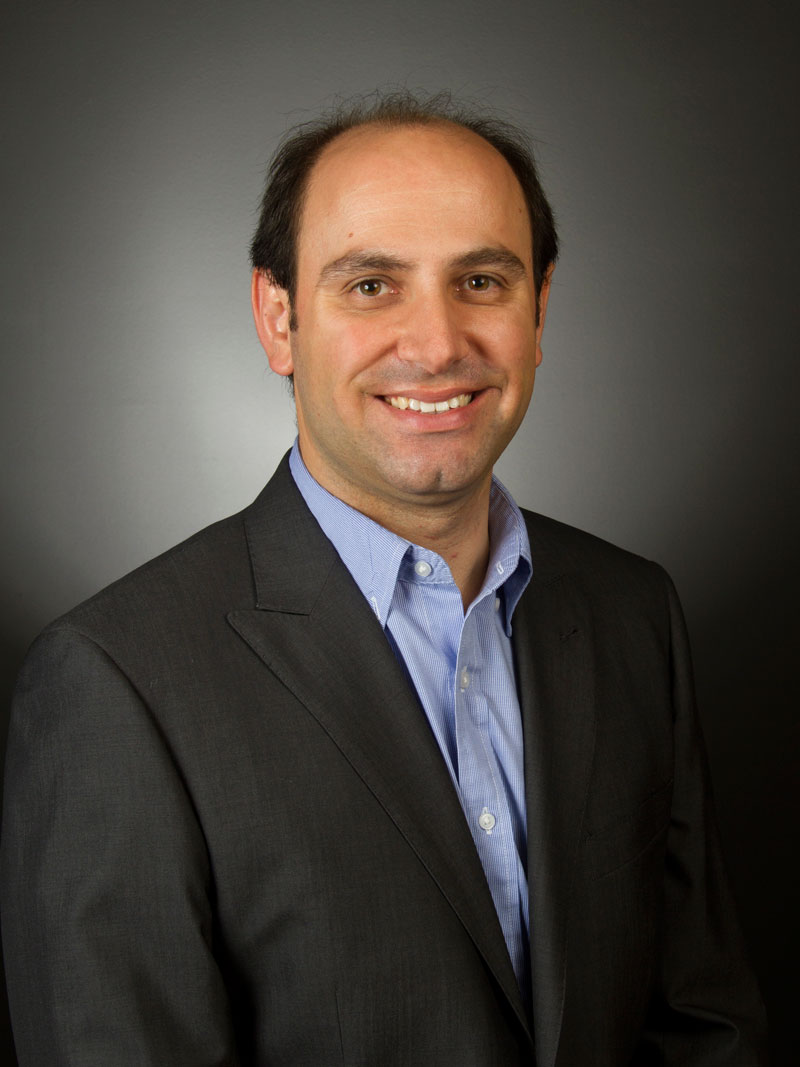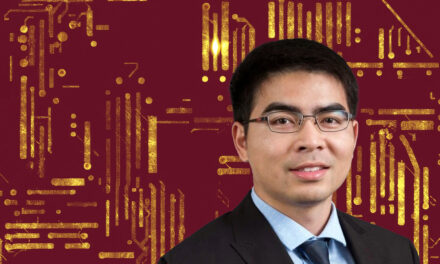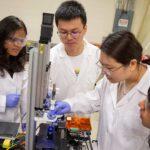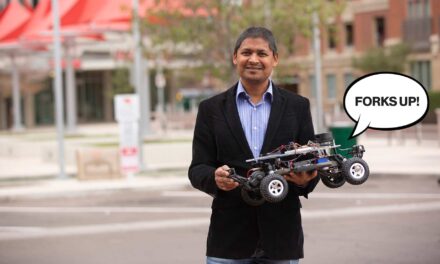
Tongay explores the quantum realm to international acclaim

Above: Image courtesy of Shutterstock
Scientific progress is impossible without materials — understanding them, manipulating them and finding efficient uses for them in modern industrialized society.
While 3D materials have made countless technologies possible, one Arizona State University researcher believes confining materials to two dimensions is the key to the technological breakthroughs of the future.
Sefaattin Tongay, an associate professor of materials science in the Ira A. Fulton Schools of Engineering at ASU, is synthesizing next-generation 2D quantum materials and working to understand their various properties through advanced transmission electron microscopy and other techniques.

Sefaattin Tongay
These 2D crystalline materials are made of a single layer of atoms, which gives them unique properties unlike those of 3D materials. They have the potential to transform technologies, including light-emitting diodes, batteries, smartphones, flexible electronics, biosensors and photovoltaic cells.
After more than two decades of research into 2D materials, Tongay has earned a reputation as one of the most influential researchers in his field. His work has been supported by numerous high-profile agencies such as the U.S. Department of Defense and the National Science Foundation — from which he received a coveted NSF Faculty Early Career Development (CAREER) Award.
He has published more than 130 SCI-indexed research articles in prestigious journals such as Science and Nature and holds several patents on 2D materials.
After finishing the past decade strong, earning a prestigious Presidential Early Career Award for Scientists and Engineers among other international honors, he’s gearing up to continue his impactful research into the materials that will improve all aspects of our lives.
Tongay shares some thoughts on his influential research career so far.
Question: What are the big picture goals and challenges of your materials science and quantum materials research?
Answer: My team and I are trying to discover entirely new types of materials with properties that cannot be explained easily within the established laws of physics. While doing so, we are also on the lookout for new material properties or functionalities that cannot be attained in other conventional materials.
The primary challenge in this field is material quality, the lack of available synthesis techniques and the difficulties in probing their quantum properties. My team discovers new synthesis techniques to innovate new materials and aims to either perfect them or introduce select types of imperfections for added functionalities.
Q: How did you get started in quantum materials and why do you enjoy it?
A: I am honestly not sure. I remember as a little boy I was fascinated by materials, types of materials or new composites, and I was also interested in physics. I feel like these two interests eventually came together and ended up with me studying quantum materials.
I love everything about this field. It is not incremental science, but the impact is always large. The field evolves very quickly, which is really cool and never gets boring.
Q: How does your work impact society and your field of study?
A: In the past, the impact has been through my seminal work in graphene/semiconductor devices, touchscreens and solar cells.
My team is introducing manufacturing techniques to synthesize new materials, which are applicable for national security and energy solutions.
The future impact of our work will likely lay the foundations for materials synthesis, which is much needed to introduce quantum applications into our daily lives.
My major contribution to the field of materials science and quantum materials has been the discovery of 2D anisotropic materials (a new class of materials that can enable quantum computing), the ability to engineer the quasi-one-dimensional chain directions (atomic chains that can carry information, photons, electrons and other information in a particular direction), the discovery of Moire excitons (information-carrying photons useful for quantum information technologies) and the discovery of graphene or semiconductor diodes and solar cells.
I do not know how my work will age in time, but, at the moment, the discovery of exotic exciton complexes and defects engineering in layered materials appear to be the most impactful
Q: Where do you think the U.S. research community stands in comparison to the rest of the world’s work on quantum computing solutions, in which quantum materials are the building blocks?
A: In my view, the U.S. still has a lead on the rest of the world in this field. That being said, the gap is closing very quickly. This is in part because everyone is recognizing the immense potential of quantum computing solutions and they are investing heavily in this field. But it takes a village to raise a child and my work isn’t possible without my collaborators from Germany to the U.K. and more.
Q: In the past year you’ve received national and international awards for your influential work. Which awards have meant the most to you?
A: By far my most prestigious award was given by President Donald J. Trump in July 2018 — the Presidential Early Career Award for Scientists and Engineers, known as PECASE.
Then in December, I received an award from the Web of Science, the largest scientific and engineering database in the world, which identified my work as some of the most influential research in the past decade.
I was also named one of the Ten Outstanding Young Persons of the World by the Republic of Turkey, where I am from. This award, organized by the Junior Chamber International, recognizes 10 young people under 40 years of age and aims to provide development opportunities that empower young people in the world to create positive change. In Turkey, the selection committee consists of university presidents, deans, famous professors and previous winners, and they give the award to individuals who show distinction in science and engineering at a global scale and have a well established academic record. I was given the award focusing on leadership in sciences and technology.
This recognition means that the direction that my team and I are taking is making the impact we hope it would. It gives us confidence in the kind of work we do. Knowing that people read, enjoy and appreciate the work coming out of my lab, in return, makes it more enjoyable for everyone on our team. It gives me confidence to take more aggressive steps.
I am hoping the recognition will help me to establish myself as one of the innovators in the field.
Q: How have Arizona State University and the Ira A. Fulton Schools of Engineering helped you to be successful?
A: From the first day, the Fulton Schools and ASU have always been 100% behind my endeavors. Materials Initiative Director Bill Petuskey, School for the Engineering of Matter, Transport and Energy Director Lenore Dai, Professor Nate Newman and Fulton Schools Dean Kyle Squires have all assisted and supported me along with so many others within ASU who have helped behind the scenes. I am forever thankful to everyone from staff members all the way up to ASU President Michael Crow.
Q: What’s next?
A: In the future, I would like to be able to have a library of quantum materials that people will closely link to my name. I want to sustain a strong materials synthesis and characterization team and build a center or cluster effort focusing on quantum applications.



































